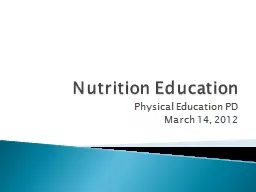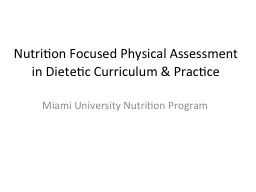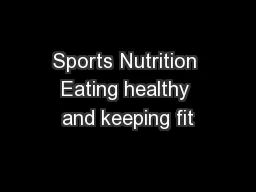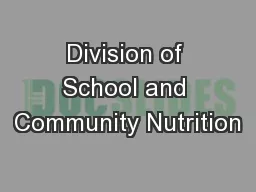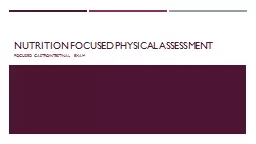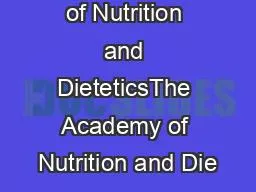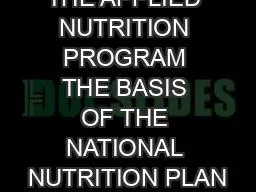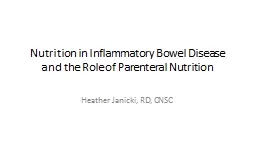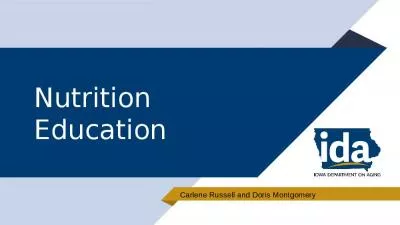PPT-Nutrition Education Physical Education PD
Author : danya | Published Date : 2021-12-09
March 14 2012 What is the most serious public health issue today Think Pair Share Percent of Obese Adults BMI gt 30 in US Normal 185 to 25 Children and Youth
Presentation Embed Code
Download Presentation
Download Presentation The PPT/PDF document "Nutrition Education Physical Education P..." is the property of its rightful owner. Permission is granted to download and print the materials on this website for personal, non-commercial use only, and to display it on your personal computer provided you do not modify the materials and that you retain all copyright notices contained in the materials. By downloading content from our website, you accept the terms of this agreement.
Nutrition Education Physical Education PD: Transcript
Download Rules Of Document
"Nutrition Education Physical Education PD"The content belongs to its owner. You may download and print it for personal use, without modification, and keep all copyright notices. By downloading, you agree to these terms.
Related Documents

